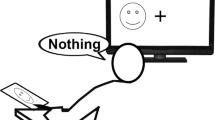Abstract
It is commonly believed that the term hippocampus represents a shining example of inappropriate and fanciful anatomical naming, because this brain structure supposedly does not display any resemblance, striking or remote, to the little sea-horse fish known as hippocampus. The aim of this short historical notice is to demonstrate that, in fact, the hippocampus looks very much like the little sea-horse fish, as demonstrated by Gustav Retzius more than a century ago. However, to note this striking resemblance, one has to apply a proper method of anatomical dissection.
Similar content being viewed by others
References
Burdach KF (1822) Vom Baue und Leben des Gehirns, Zweyter Band. Leipzig: Dyk’sche Buchhandlung, 418pp + 7 copper plates.
Honegger J (1890) Vergleichend-anatomische Untersuchungen über den Fornix und die mit ihm in Beziehung stehenden Gebilde. Rec Zool Suisse 5:201–434.
Hill A (1893) The Hippocampus. Philos Trans Roy Soc Lond B 184:389–429.
Lewis FT (1923) The significance of the term hippocampus. J Comp Neurol 35:213–230.
Tilney F (1939) The hippocampus and its relations to the corpus callosum. J Nerv Ment Dis 89:433–513. (Reprinted from Bulletin of the Neurological Institute of New York, Vol. VII, No. 1, March, 1938., pp. 1–77).
Meyer A (1971) Historical Aspects of Cerebral Anatomy. London — New York — Toronto: Oxford University Press, 230pp.
Sano K (1997) Special Lecture: Hippocampus and epilepsy surgery. Epilepsia 38(Suppl. 6):4–10.
Schiller F (1997) A memoir of olfaction. J Hist Neurosci 6(2):133–146.
Swanson LW (1999) Camillo Golgi on the structure of the hippocampus. J Hist Neurosci 8(2):164–169.
Pearce JMS (2001) Ammon’s horn and the hippocampus. J Neurol Neurosurg Psychiat 71(3):351.
Bentivoglio M, Swanson LW (2001) On the fine structure of the pes hippocampi major (with plates XIII–XXIII, 1886. Brain Res Bull 54(5):461–483.
Walther C (2002) Hippocampal terminology: concepts, misconceptions, origins. Endeavour 26(2):41–44.
El Falougy H, Benuska J (2006) History, anatomical nomenclature, comparative anatomy and functions of the hippocampal formation. Bratisl Lek Listy 107(4):103–106.
Hyrtl J (1880) Onomatologia anatomica. Wien: Braumüller.
Gurunluoglu R, Gurunluoglu A (2008) Giulio Cesare Arantius (1530–1589): A surgeon and anatomist: His role in nasal reconstruction and influence on Gaspare Tagliacozzi. Annals of Plastic Surgery 60(6):717–722.
Arantius JC (1587) De humano foetu liber tertio editus, ac recognitus. Anatomicarum observationum liber, ac de tumoribus secundum locos affectos liber. Venetiis: Apud Iacobum Brechtanum.
Arantius JC (1564a) Iulii Caes. Arantii… De humano foetu libellus. Bononiae, ex officina Ioannis Rubrii ad insigne Mercurii (in octavo).
Arantius JC (1564b) De humano foetu opusculum. Romae.
Arantius JC (1571) De humano foetu libellus. Venetiis (in octavo and in quarto)
Arantius JC (1579a) De humano foetu libellus. Basileae, apud Seb. Petri (in octavo).
Arantius JC (1579b) Observationes anatomicae. Basileae.
Retzius G (1896) Das Menschenhirn — Studien in der makroskopischen Morphologie. Text und Atlas. Stockholm: Königliche Buchdruckerei P. A. Norstedt & Söner.
Vicq d’Azyr F (1786a) Traité d’Anatomie et de Physiologie, avec des Planches coloriées Représentant au naturel les divers organes de l’Homme et des Animaux. Tome premier. Paris: L’Imprimerie de Franc. Amb. Didot l’Ainé.
Vicq d’Azyr F (1786b) Planches Anatomiques avec des Explications tres Détaillées; Premiere Partie, Organes contenus dans la Boete osseuse du Crane. Cerveau de l’Homme (Planches I–XXXV). Paris: L’Imprimerie de Franc. Amb. Didot l’Ainé.
Author information
Authors and Affiliations
Corresponding author
About this article
Cite this article
Judaš, M., Pletikos, M. A note on the sea-horse in the human brain. Translat.Neurosci. 1, 335–337 (2010). https://doi.org/10.2478/v10134-010-0041-8
Received:
Accepted:
Published:
Issue Date:
DOI: https://doi.org/10.2478/v10134-010-0041-8




